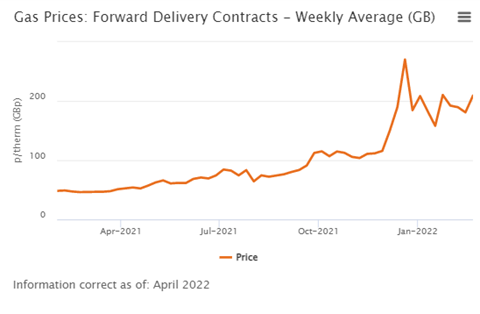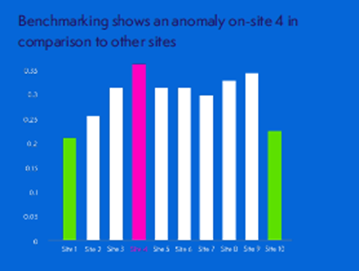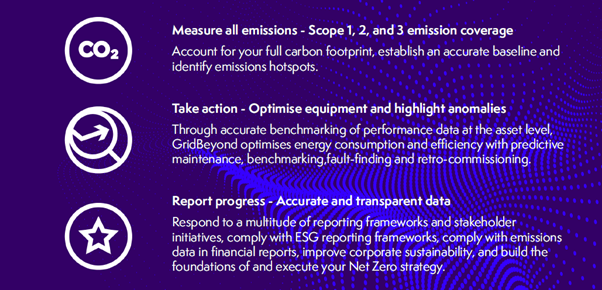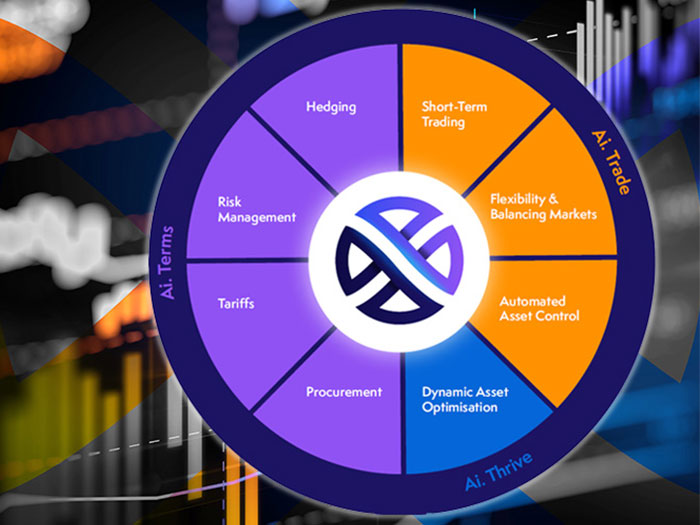Insights
better business decisions
Posted 1 year ago | 8 minute read

Five key energy priorities for businesses in 2022
From the ongoing COVID pandemic to recent price rises in the wholesale energy market, supplier failures, the impacts of Russia’s invasion of Ukraine on global energy markets and significant changes in the number of and ambition behind net zero related plans, the early 2020’s have been influenced by a series of events, which have had knock on impacts on businesses and the wider economy.
This situation will reward companies that are proactive in how they engage with the energy market. So, here are our recommendations for key actions your business should consider taking this year.
1. Review your purchasing strategy
The price of energy has dramatically increased in recent months; both in the UK and globally, causing widespread concern and knock-on impacts for energy consumers throughout the value chain. The rise has forced several energy suppliers out of the market.
Industrial consumers, especially energy-intensive industries, are also being affected and representatives for several industries, including steel, ceramics, chemicals, and paper, have warned that the high prices could lead to shut-downs and has resulted in calls from most sectors for the government to step in.

Source: Ofgem
While the current energy crisis is undoubtedly having a negative impact on many, it does provide an opportunity for businesses. If your electricity supply is currently un-hedged, you may have already seen your bills rise and wondering what the outlook could be for the future and crucially how to manage your costs.
Businesses that take stock of the way they produce and consume energy and create a strategy that not only can reduce operating costs, but also generate revenues that can be further invested in new techniques and technologies that can support decarbonisation and sustainability.
I&C businesses have significant potential to both reduce costs and make revenues by taking advantage of short-term downward energy prices through hybrid and flexible procurement . Whether you have a broker or manage your own supply contracts, we can support you with energy procurement.
Through a deep understanding of your requirements, our trading and energy experts will draw upon our AI smart forecasts to provide advice on a tariff type and supplier that will allow you to best monetise your position. We will also review your existing hedging policy and make recommendations on load shape to ensure optimum procurement efficiency and reduced overall costs for your business.
2. Reduce demand
Reducing energy demand provides a range of benefits. From simple cost and carbon savings, through to pattern monitoring for optimisation (and everything in between).
By gathering data, GridBeyond’s AI-powered Point platform can identify and understand your energy usage patterns to see where efficiencies can be made. The same platform uses your operating parameters and schedules to optimise resilience too.
By measuring the energy consumption of your onsite assets using our advanced metering technology, we can build a complex energy profile. Energy consumption patterns can tell us a lot about the status of a piece of equipment. By collating this data, and combining it with aggregated data from similar assets, our AI technology identifies trends, evaluates asset health, and provide alerts accordingly.
When analysed by our Data Scientists, this benchmark forms the basis of a strategy to improve performance and environmental standards by evaluating the areas and equipment that may benefit from retro-commissioning. By ascertaining the likelihood of a fault occurring, businesses can generate significant savings.
The bottom line is that when you can ascertain how and where your organisation can reduce demand, you can understand how your business can participate in markets, services, optimisation and efficiency programmes. When using the right technology platform, these decisions are all automated using machine learning algorithms.
Starting with a comprehensive benchmark of the energy consumption of an asset, our experts compare its performance, operational processes, facility, or organisation to historical data, peers, and established norms, with the goal to improve performance and environmental standards.
Using this benchmark, combined with our Point Ai. Thrive forecasting solution, we provide intelligence and insights on every aspect of energy usage to find faults, understand the best retro-commissioning projects and flag up anomalies that could signal an asset fault or need for maintenance.
3. Invest in on site assets
With electricity prices rising, warnings on security of power supplies and increasing pressure on businesses to improve their sustainability, access to clean electricity is becoming increasingly important for businesses. The good news is that the cost of on-site solar, behind-the-meter batteries, electric vehicle chargers and grid-responsive appliances are continuing to fall and could provide a new source of revenue for some businesses.
For companies with high fuel costs, or for those whose operations demand reliable power, on-site energy generation or storage technologies can provide numerous benefits, including decreased costs, cleaner energy, improved reliability and a lower carbon footprint.
The immediate benefits of on-site generation or energy storage fall under three categories:
- Energy security – Although UK supplies are relatively secure compared with other parts of the world any loss of supply can be costly. This can be avoided by having a safeguard like on-site generation or energy storage in place. In addition, energy prices can be highly volatile, by generating or having storage on-site you can avoid peak costs and some parts of the non-commodity cost associated with delivered energy.
- Increased flexibility – On-site generation gives you greater control over all aspects of your energy usage. You can scale back your reliance on the grid and limit your exposure to swings in the market. Installing your own generation equipment also makes it easier to scale and budget your energy needs as your business grows.
- Boosted green credentials – Corporate social responsibility is climbing up the priority list for many businesses. On-site energy generation is an excellent way to demonstrate your commitment to reducing your carbon footprint.
In addition to realising the benefit on-site, you could make additional revenue from your assets by looking at routes to market for power produced or stored. This gives energy managers greater control, allowing them to sell energy or monetise flexibility.
4. Maximise efficiency
Every energy strategy starts with metering, monitoring and control. When you are looking at your energy or net zero strategy, energy efficiency is vital, as without minimising what your business currently uses, it is harder to accurately predict your future requirements.
In additional to making changes to equipment or processes it is equally important to ascertain the likelihood of a fault occurring in equipment. By measuring the energy consumption of an asset using advanced metering technology, a complex energy profile can be built for an asset. By collating this data, and combining it with aggregated data from similar assets, AI technologies can identify patterns, evaluate asset health, and provide alerts accordingly. This will not only reduce your operational costs, but also prevent long downtimes if an asset fails.

5. Get your data in order
Net zero targets mean understanding exactly where and how you are generating emissions is going to be key to securing future competitiveness.
Although talk of collective action was a key feature of COP26 climate summit, a lot of progress in recent years has come through competition. The year will begin with two landmark reports that will shape the climate discussions in the months to come leading up to COP27 in Egypt and the trend of recent years have been ever-increasingly stringent targets. Companies will have to embrace the new green economy and take genuine action on sustainability.
Depending on the nature of your business, advanced metering can help to provide more granular detail about specific energy use and enable you to accurately track reductions and impacts. But evaluating your performance can be challenging owing to the complexity of collecting and reporting on emissions data from multiple sources and changing standards for disclosures.
Using advanced energy monitoring and control technology, can provide the essential data needed to manage and monitor emissions reporting and improvement programmes. Emission factors form the backbone of programmes to improve operations, but their application can be quite complex given different data sources with varying methods and update cycles.

Round-up
There are a variety of ways that your business could not only reduce energy costs but also benefit from volatility in energy prices by having the right technology is critical.
Using AI and Robotic Trading combined with the expertise of our trading experts and Data Scientists, GridBeyond’s Point Ai. Services open the door for your business to take your energy strategy from passive purchasing and consumption to predictive analysis and active energy management and trading.
Using AI and Robotic Trading combined with the expertise of our trading experts and Data Scientists, GridBeyond’s Point Ai. Services open the door for your business to take your energy strategy from passive purchasing and consumption to predictive analysis and active energy management and trading. GridBeyond’s Point Ai. Services consist of three complementary products: Ai. Terms, Ai. Trade & Ai. Thrive, which together, will transform your energy into opportunity.
If you have any questions around the potential for your site, contact our team, or to learn more about the complimenting services offered by GridBeyond’s intelligent energy platform, our Point Ai. Services brochure.

